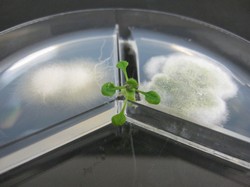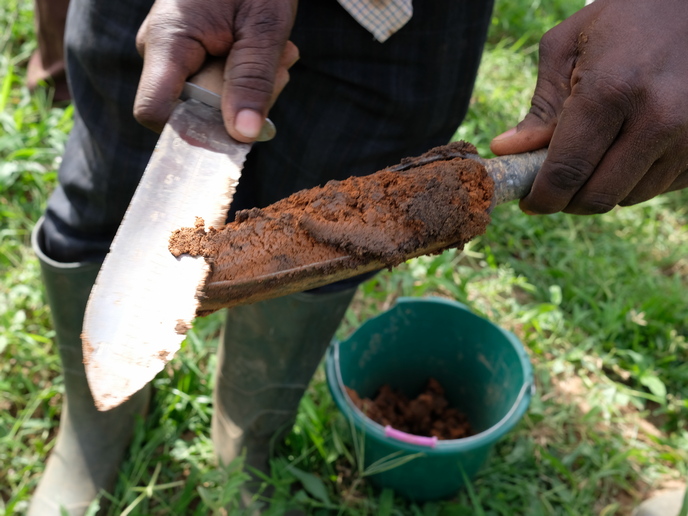Soil fungi boost plant resistance
Beneficial soil fungi belonging to the species Trichoderma are ideal candidates as BCOs, which can directly inhibit the growth of pathogenic organisms. They can also induce a systemic defence response – induced systemic resistance (ISR) – in the plant, leading to a more rapid and effective activation of its defences when attacked by a pathogen. The EU-funded project TO THE ROOTS OF ISR (To the roots of induced systemic resistance in the Arabidopsis-Trichoderma-Fusarium tripartite interaction) was established to identify plant responses originating in the roots that drive the ISR process. This was achieved through a comparative transcriptomics study of the tripartite interaction of Arabidopsis roots with Fusarium as a soilborne plant pathogen and Trichoderma as a BCO. Several Trichoderma strains belonging to different species were screened for biological control capacity through ISR. An extremely promising strain termed Tg5 was found to be highly antimicrobial against a wide spectrum of pathogens and good at inducing ISR. It was also shown that metabolites secreted by Tg5 are equally capable of inducing ISR in Arabidopsis against the soilborne pathogen Fusarium oxysporum. A split root assay was used to investigate the local and systemic ISR responses of Trichoderma-colonised Arabidopsis roots to Fusarium oxysporum at the transcriptomic level. In addition, the genome of the Tg5 strain was sequenced and the bioactive fraction of the secretions identified. Analysis of the transcriptomic data revealed the involvement of a large number of differently expressed genes in Arabidopsis roots. These could be grouped into several significantly altered biological pathways, including the indirect influencing of hormonal biosynthesis and signalling and the induction of phenylpropanoid compounds. TO THE ROOTS OF ISR provided a detailed picture of root transcriptome responses, indicating that the Trichoderma strain plus its bioactive metabolites show great promise for combating pathogens. It also revealed plant roots’ responses to such a beneficial fungus can help find more microbial candidates for biological control applications, thereby contributing to sustainable pest management in today’s agriculture.







